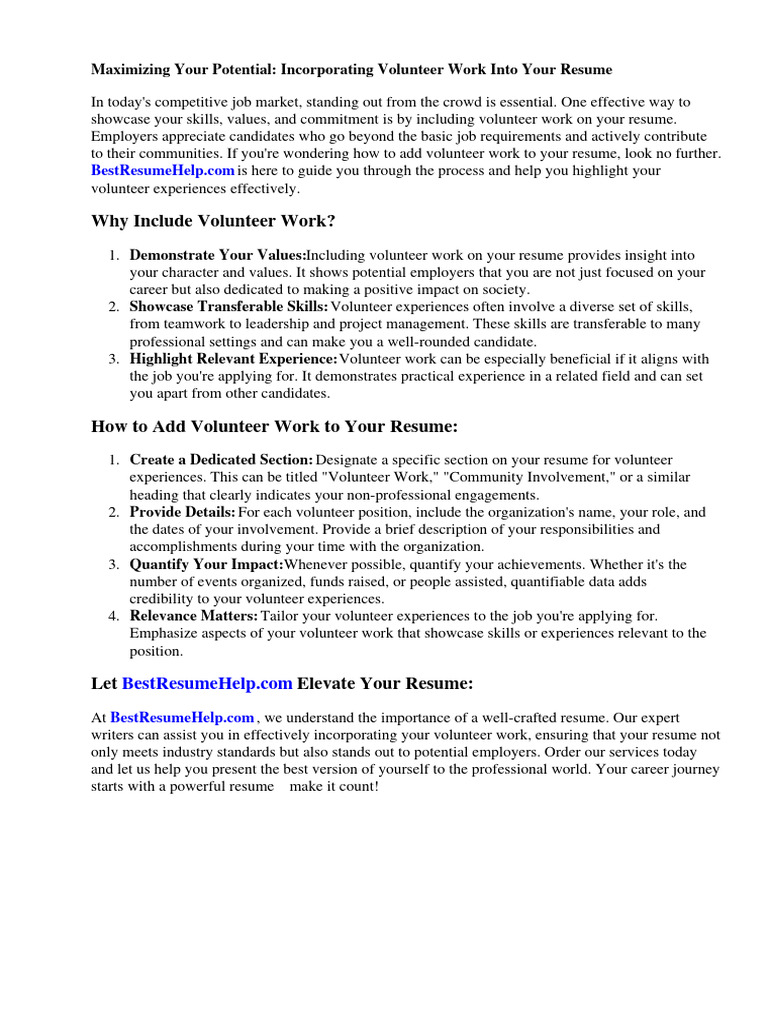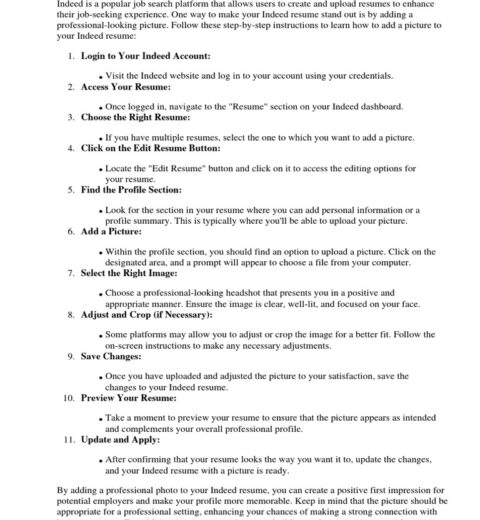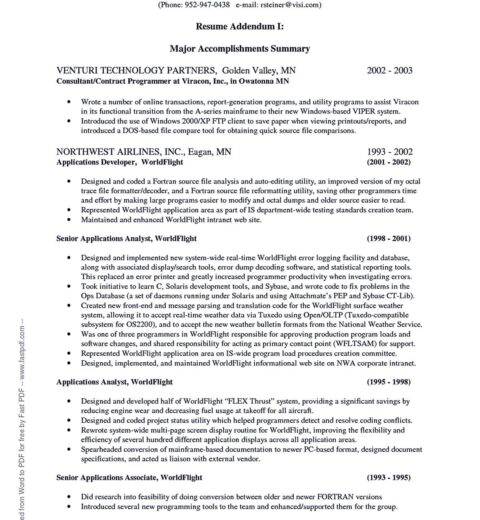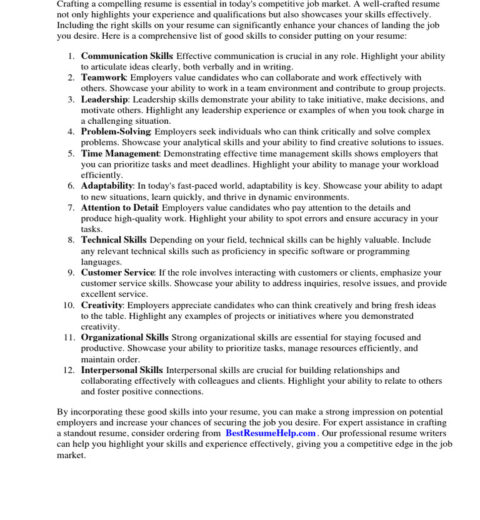In today’s competitive job market, having a well-rounded resume is essential. One critical aspect of a strong resume is the inclusion of volunteer work, which can significantly enhance your profile. Volunteer experiences not only reflect your altruism but also showcase your soft skills, work ethic, and dedication to community service. Understanding how to present volunteer work effectively can distinguish you from other candidates and demonstrate your multifaceted skills to potential employers.
When contemplating how to incorporate volunteer work into your resume, consider the following outline to ensure your contributions are articulated with clarity and precision.
1. Determine the Relevance of Your Volunteer Work
Before including volunteer experiences on your resume, assess their relevance to the position you are applying for. Tailoring your resume to reflect experiences that align with the job description can create a compelling narrative. For example, if you are seeking a role in public relations, volunteer work that involves communication, community engagement, or event planning becomes pertinent. Aligning your volunteer experiences with your professional ambitions will add value to your application.
2. Choose the Right Format
The format in which you present your volunteer work is crucial. Listed either within a dedicated “Volunteer Experience” section or integrated with your professional experience, it should be eye-catching yet straightforward. A distinct section allows the hiring manager to focus on your altruistic endeavors without merging them with paid experience. Use bullet points to enhance readability and ensure consistency with the overall layout of your resume.
3. Be Specific and Quantify Achievements
To provide a robust depiction of your contributions, specificity is crucial. Describing your role using tangible details can amplify the impact of your experiences. Utilize metrics and numbers where applicable, as they lend credence to your involvement. For example, stating that you managed a team of 10 volunteers to organize a fundraising event that raised $5,000 provides a clear picture of your leadership and organizational abilities. Employers appreciate concrete evidence of your impact and capabilities.
4. Highlight Key Skills Developed
Volunteering often cultivates various soft skills that are highly valued in the workplace. Identify and elucidate key skills acquired through your volunteer work. Communication, teamwork, leadership, problem-solving, and adaptability are just a few examples of such competencies. For instance, if you volunteered as a team leader for a local charity, emphasize your experience in delegating tasks and fostering collaboration among diverse groups. Illustrating how these skills apply to your target job can significantly enhance your appeal.
5. Connect with Personal Branding
Your resume is not just a reflection of your professional capabilities; it also serves as a representation of your personal brand. Integrating volunteer work provides insight into your values and interests, giving potential employers a glimpse into your character. Consider the mission of the organizations with which you’ve volunteered and how they resonate with your personal ethos. This alignment can create a narrative that is not only intriguing but also deeply appealing to organizations seeking candidates who represent their values.
6. Keep it Concise
While detailing your volunteer experiences is important, brevity is equally crucial. Employers typically spend mere seconds scanning each resume. Therefore, ensure that your descriptions are concise yet informative. Prioritize quality over quantity; rather than listing every volunteer position you have held, focus on those that showcase your most relevant skills and experiences. A well-articulated experience in one volunteer capacity can outweigh superficial accounts of numerous roles.
7. Use Action Verbs for Impact
The choice of words can dramatically affect the presentation of your volunteer activities. Use action verbs to convey your contributions dynamically. Words such as “coordinated,” “developed,” “managed,” and “delivered” can communicate your proactive involvement and leadership. Action verbs energize your resume, transforming it from a mere list of responsibilities into a compelling depiction of your initiative and impact.
8. Include Dates and Descriptions
When detailing your volunteer experiences, include the dates of your involvement. This addition gives context to your experiences and demonstrates your commitment. Describing the nature of the organization and your specific contributions will elucidate your role. Consider adding the organization’s mission, particularly if it is well-known or highly respected, as this can lend additional credibility to your efforts. A clear timeframe also signals a level of stability and dedication that potential employers appreciate.
9. Proofread and Edit
A polished resume is a requisite for any job application. Thorough proofreading is essential. Typos and grammatical errors can undermine the professionalism of your application, detracting from the impression you wish to convey. Consider seeking feedback from peers or professionals to ensure clarity and coherence in your presentation.
10. Continuous Update and Adjustment
Your resume is a living document that should evolve alongside your professional journey. Regularly updating your volunteer experiences as you take on new roles not only reflects your growth but also allows you to adapt to changing job markets. Tailor your volunteer section for each application, emphasizing the most relevant experiences to the role in question.
By thoughtfully integrating volunteer work into your resume, you enhance your profile and increase your appeal to potential employers. This strategic presentation reveals not just your skills and experiences but also your character and dedication to making a difference in your community. A well-crafted volunteer section will intrigue hiring managers, prompting them to see you as more than just a list of qualifications—a potential asset to their organization.




